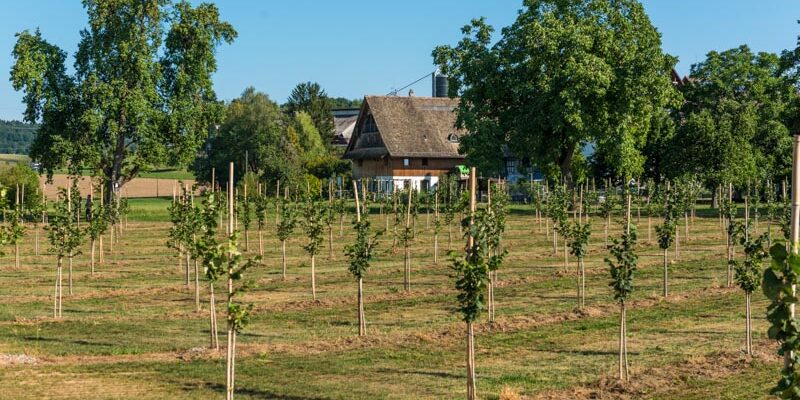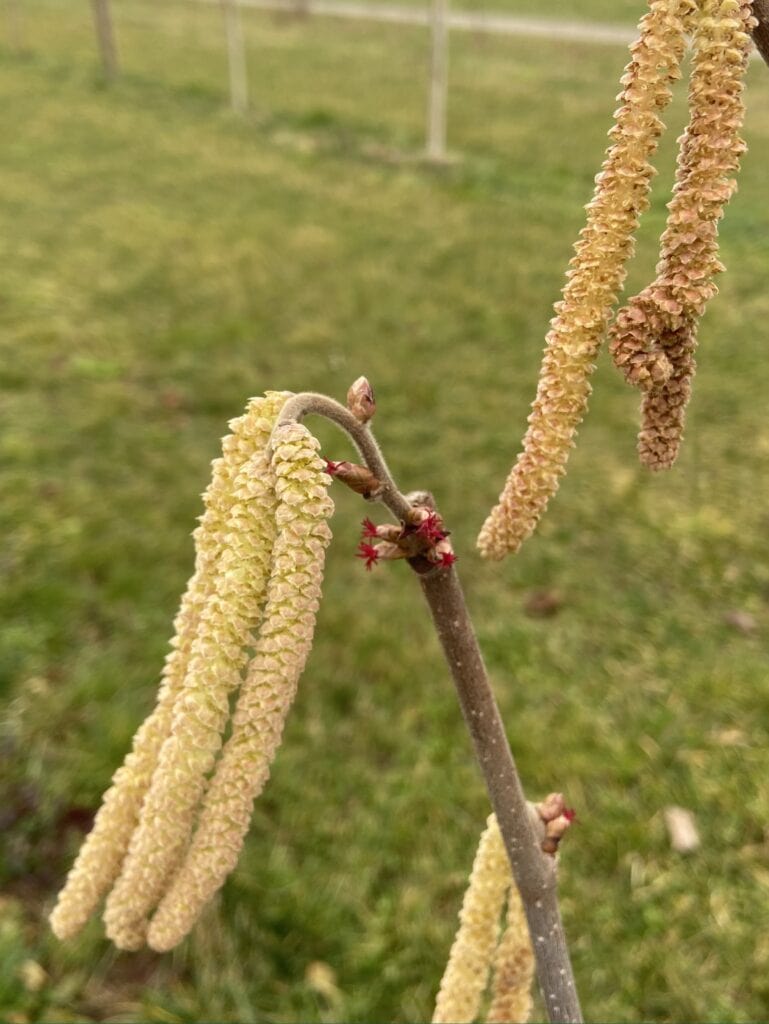Flowering & pollination of hazel - new findings for cultivation in Switzerland

Barcelona, Butler, Ennis, Hallesche Riesen, Walter + Heidi: names that seem to have nothing in common at first glance. However, they refer to five of the 53 hazelnut varieties that Stefan Gerber grows on his farm in Mettmenstetten ZH. From the end of December 2022 to the end of March 2023, Stefan observed when the different varieties bloomed - and gained initial insights that are key to the future cultivation of hazelnuts in Switzerland.
Pollination of the hazel
In order to understand Stefan's findings, we first need to understand how the hazel is pollinated:
- The hazel is pollinated by the wind. The pollen from the male flower of one variety is wind-pollinated onto the female flowers of another variety. The latter variety then develops the fruit from which the nuts are produced.
- For pollination to work, the varieties must be genetically compatible and the male and female flowers of two varieties must bloom at the same time.
- A basic distinction is made between pollinator and yielding varieties. In the case of pollinator varieties, many male flowers are desired, while in the case of yielding varieties, many female flowers are desired so that as many hazelnuts as possible grow in summer.
Proven pairs are Tonda Romana (pollinator variety) and Tonda di Giffoni (yielding variety): The Tonda Romana pollinates the female flowers of the Tonda di Giffoni with the pollen from its male flowers. The Tonda di Giffoni is a high-yielding industrial variety and therefore one of the most popular hazelnut varieties.


So much for the theory - But what exactly did Stefan find out?
- The flowers of the Tonda Romana and the Tonda di Giffoni do not overlap on Stefan's farm, so this combination will probably not work in our latitudes.
- Varieties that flower before mid-February are too susceptible to frost. This is why mainly late-flowering varieties are suitable for cultivation in Switzerland.
- In this year's variety trial, it also became apparent that there is still a lack of late-flowering pollinator varieties in particular. From mid-March, there is a lack of pollen to accompany the female flowers, which last until the end of March. This imbalance may pose a problem for pollination.
Conclusion and outlook
The southern hazelnut varieties (such as the Tonda di Giffoni) can probably only be cultivated in Switzerland with a high risk of late frosts due to their early flowering. However, there are many other varieties that thrive well in the local climate. Successful cultivation in Switzerland requires, on the one hand, late-flowering yielding and pollinator varieties, which are being identified as part of our project. On the other hand, the suitability of the yield varieties depends on the taste and size of the nuts as well as the plant's susceptibility to pests. We will be able to report more on these parameters after the harvest in the fall. One thing is certain: in future we can look forward to hazelnut varieties that are barely known and yet still tasty!
About the hazelnut project: Although the hazelnut is native to Switzerland, there are almost no local hazelnuts: There is hardly any knowledge about variety selection and cultivation and it is difficult to obtain good planting material. We want to change that. Our aim is therefore to establish the first large hazelnut plantation in the canton of Zurich in order to promote biodiversity in a concrete and local way.